Digital Assistant Nurse – A Role for the Future?
We’ve heard it before – the fact that more and more elderly people will need to be cared for by fewer younger people. A societal challenge and equation that doesn’t add up without new innovative and digital solutions. Natalie Simander works as a digital assistant nurse in Tyresö Municipality.
When Natalie Simander arrives at work at seven o’clock, she starts up her computer and the digital platform “Tyresö for Me.” She begins her day by writing personal messages to all fifty of her senior users, wishing them good morning and following up on previous chat threads about all sorts of topics.
“It can range from giving advice on diet and exercises to scheduled home care visits or other personal questions. Recently, I posted various quizzes that were very much appreciated,” says Natalie.
Facts about the ‘Kommunikativ’ project
- An implementation project in Tyresö Municipality.
- The purpose of the project is to meet the societal challenge of a growing elderly population with increasing needs but with the same resources – through new innovative working methods supported by IoT in municipal care.
- The project is run by Tyresö Municipality, with Cuviva and RISE as project partners.
- Funded by IoT Sweden with just over 3,200,000 SEK (279.360 Euro).
More independence and involvement
For just over six months, she has worked as a digital assistant nurse in Tyresö Municipality. This new role is part of ‘Kommunikativ’, an implementation project funded by IoT Sweden. The project’s goal is to develop digital services that help elderly people become more independent and involved in shaping their own lives.
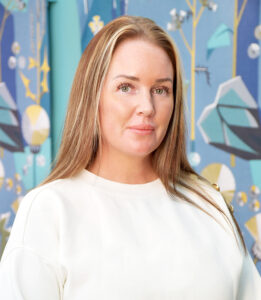
Found her Calling
Let’s go back to 2006. At that time, Natalie Simander was nineteen years old and got a job as a care assistant, working hourly at Tyresö Municipality. Initially, she planned to work only for the summer, but she quickly realized that she enjoyed her new job. What really drew her in were the social aspects and the connection with the elderly.
“I’ve always found it easy to talk to people, and being able to brighten someone’s day felt really rewarding. The elderly saw me for who I was and never judged me for being young, which meant a lot to me,” says Natalie.
So she stayed, and a few years later, she secured a permanent position and also had the opportunity to continue her education to become an assistant nurse. Today, Natalie feels she has found her calling in her profession, perhaps especially in her recent role as a digital assistant nurse.
A health-promoting app
Her work as a digital assistant nurse involves assisting and communication with the users of the app “Tyresö for Me.” Currently, there are fifty users, but interest is growing, and more people want to use the app. “Tyresö for Me” is a health-promoting app that provides easily accessible information on things the elderly need in their daily lives. For example, it includes updates on what’s happening in the municipality, contact numbers for assistance officers, and suggestions for meal plans and physical activities.
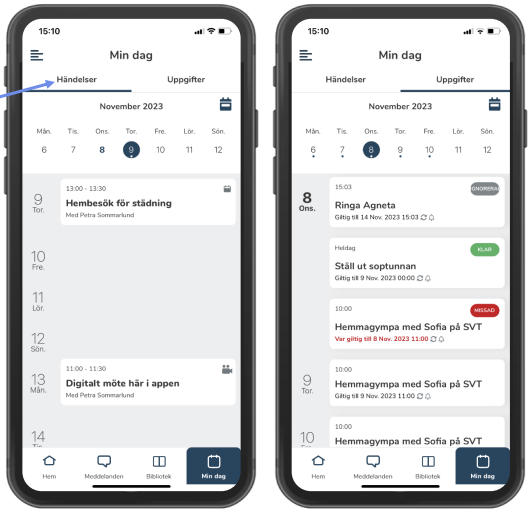
In the app, users can see what’s happening under the “My Day” tab, such as a schedule of daily events. There are also notifications that can help remind them of various tasks like food deliveries, garbage collection, or showering. But perhaps most importantly, the app offers the ability to interact with Natalie, either through chat or video calls.
“We need to find new ways of working to cope with the fact that more people are aging and have increased needs for help, while the resources to assist them are becoming scarcer.”
A lot of the information in the app can also be found online on different websites, but the app presents it in a more accessible way. Natalie is carefully pointing out that the service is not a healthcare advisory service but rather a guide and support for many different aspects of daily life.
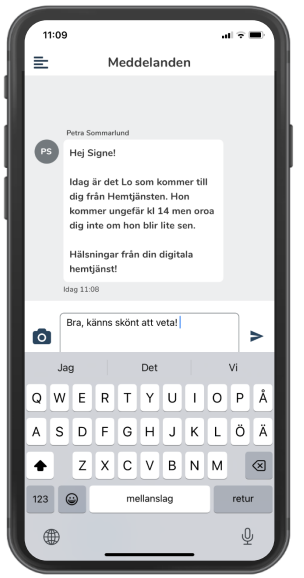
Reducing digital exclusion
Sometimes new digital solutions in elder care are met with fears of replacing physical meetings and important human contact with a digital service. There’s a concern that loneliness and exclusion will increase. But Natalie wants to turn that thinking around:
“I see it more as a way to reduce digital exclusion. When it comes to our app, it’s not a robot or AI you’re interacting with. I get so much positive feedback from our users, and I feel that we’re actually lowering the barriers to using digital services.”
She further explains that most people want to remain independent for as long as possible in their own homes.
“It’s a very private matter to let new people into your home. Not everyone wants that. By receiving support for simpler things through the app, it’s possible to extend the time someone can manage on their own in their home,” Natalie believes.
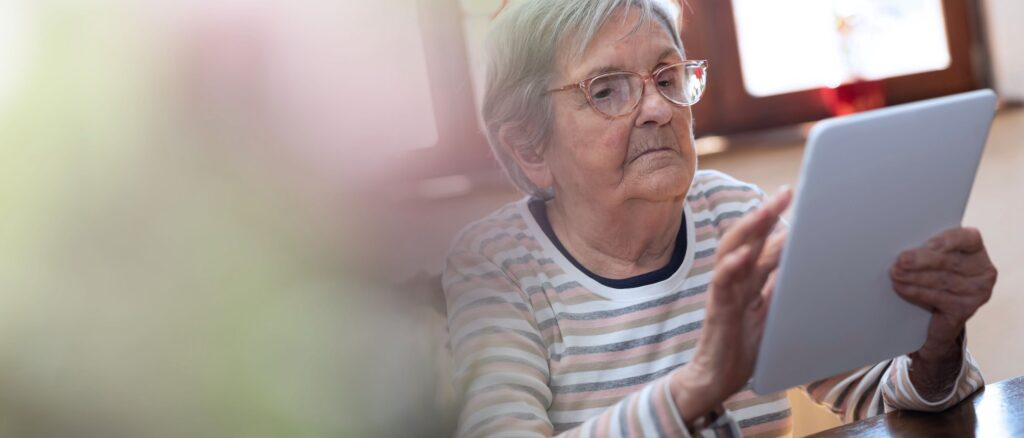
A jack of all trades
The role of digital assistant nurse is a bit like being a jack of all trades. There are many tasks to juggle, and you need to be attentive, able to pick up on signals and wishes that may not always be explicitly expressed. Natalie’s experience is that the older generation often has a habit of “not wanting to be a bother.” This means they often don’t ask for things.
So, it’s not the technology itself that has been the challenging part of being a digital assistant nurse, but rather understanding what the users really need. She often has to gently push to get these needs to come to the surface. Natalie shares a touching example when, after some probing, she realized that one user, an elderly man, was feeling lonely.
“He missed spending time with male friends. Women are often better at meeting up and doing things together like having coffee, knitting, or other activities. So, we organized a men’s lunch with Wallenbergare (a Swedish dish) and non-alcoholic beer – it was a well-received event.”
A future work model
Natalie is feeling more and more comfortable in her role as a digital assistant nurse. She believes it can become the future way of working, but it requires a good understanding of the needs of the elderly, something that can only be gained through human interaction. Natalie feels that she has a good understanding of the needs of the elderly after all her years in home care. She often emphasizes that it’s about creating motivation:
“It’s about how you present things, whether it’s to someone who doesn’t want to shower, or to someone who is too sedentary. Creating motivation requires attentiveness, persistence, and a bit of coaxing. I want my users to feel that I’m here, I’m available, and it’s going to be okay.”
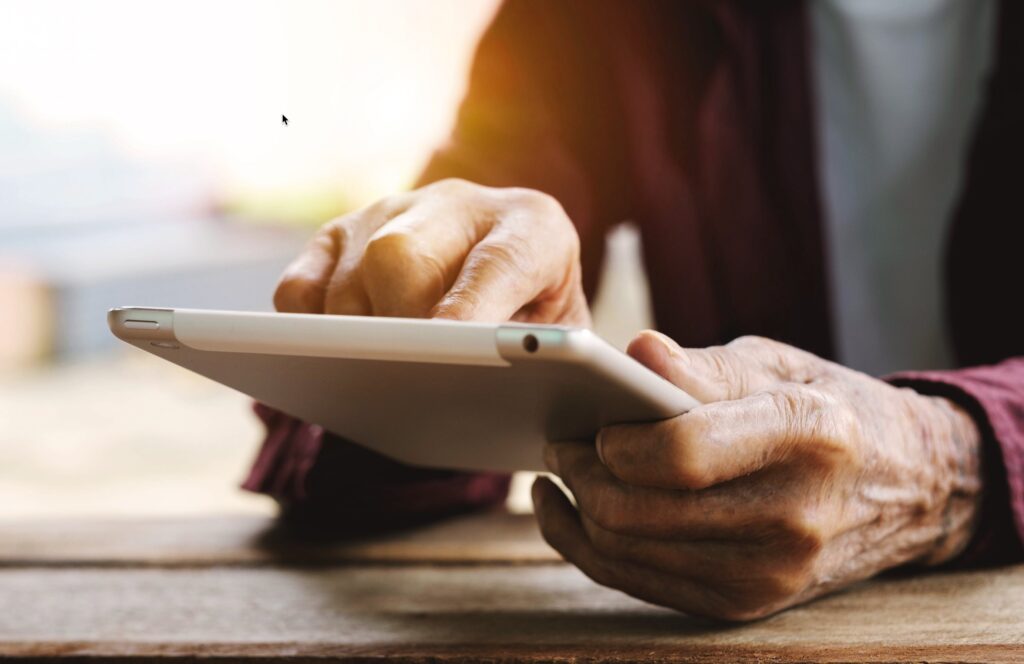
Solving the demographic challenge of having more elderly people who need help from fewer younger people requires new innovative and digital solutions. The role of a digital assistant nurse could be an important part of the solution. Natalie Simander is a dedicated professional who is passionate about her work, using technology as a tool for a greater purpose. Today, the elderly in Tyresö Municipality can look forward to a pleasant afternoon:
“There will be a crayfish party tonight, and all the app users will get a push notification about it in the ‘Things to do today’ tab. I hope many will join,” Natalie concludes.
